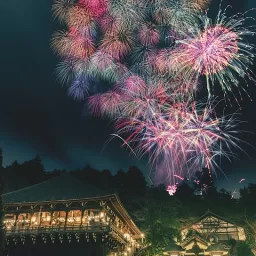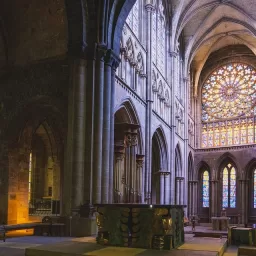It’s August 24, 2008
It’s curfew time in Srinagar, the capital of Indian Administrated Kashmir. Most people are staying indoors and the atmosphere is one of eerie silence. A loud scream piercing the silence originates from the street running byGhulam Qadir Hajam’s house, deep inside a maze of narrow lanes. Hajam knew it was his son Mohammad Yaqoob who had just stepped out to fetch milk for preparing the afternoon tea. Anxious, the 70-year-old local barber first asks his other son Hilal to check. The screams grow louder now and he decides to go out as well.Moments later, he is shot dead in cold blood. The CRPF men opened fire at him, a few meters outside his house. His son, Yaqoob too was hit with bullets and both are battling for life. Hilal is clueless as to what crime his father and brother had committed, to get a round of bullets in the chest. As Hilal is crying on the road, an ambulance takes the people towards the nearest hospital….
It’s October 24 1947
The clock is now shifted back by 61 years. It’s a chilly autumn night on 24th October 1947..Maharaja hari singh, ruler of J & K is merrily enjoying the festival of lord Shiva in his palatial palace in the presence of his commanders and ministers. This festival is prominent for its colorfulness and vivacity. But, at the same time, 100 Miles away a man is busy lighting the fuse of a few gelatin sticks covertly placed in the main chamber of the Mohra hydro electric power station, constructed on the banks of river Jhelum. A few seconds later, a thunderous noise erupts and the entire power station is reduced to rubble. The aftershock of the blast could be felt 100 miles away from the power station, when all the lights went out in Srinagar. Suddenly, the city of Srinagar was plunged into darkness. The Maharaja, the British living in houseboats, and mainly the people of Srinagar, had no idea of what was happening. They didn’t think that it was a bad omen for the state and a harbinger of things to come. At the same time, hundreds of jackals, armed to the teeth are now nearing Baramulla, a border town in the valley. These jackals are nothing but wild natured Pathans originating from Peshawar. They are very optimistic about capturing the Kashmir valley and making it accede to Pakistan. This daring move from the Pathans was aided predominantly due to a political blunder made by the Maharaja of J&K, Hari Singh. During the accession of princely states with India and Pakistan, Lord Mountbatten urged him to make J&K accede to Pakistan, because of its predominant Muslim population and geographical proximity to Pakistan. He declined, as he was a Hindu. Mountbatten requested him to consider the option of merging with India at least. Again he declined, probably because the power and the charm associated with the throne intoxicated his mind. As a result, these marauders from the West began to invade J&K, spurred by vested interests in Pakistan. As these wild barbaric Pathans began closing in on the bustling town of Srinagar, they went on a killing and looting spree in the adjoining areas. The Maharaja was left with no option and blindly signed the accession treaty with India, without taking into account the will of his subjects. On October 27 1947, the Indian army entered the valley from the Jammu side and began to repel the marauding Pathans. This event marked the start of the first Kashmir war……
Troubled Region
After the first Kashmir war between India and Pakistan in 1947, the state was divided between the 2 nations. India took Jammu, Ladakh, and the Kashmir valley while Pakistan took the small strip of western Kashmir, Gilgit and Baltistan. According to the UN treaty, the state is disputed territory. Neither India nor Pakistan can claim the state. A plebiscite to decide whether the territory belongs to India or Pakistan has not been conducted for the past 61 years. Separatism and anti India feelings began to grow in the valley from 1947 onwards. The reason being its predominantly Muslim population and geographical proximity to Pakistan began to make the Kashmiri Muslims develop a soft corner and a sense of false brotherhood towards Pakistan. Since the early 1950’s, many people in the valley, especially Muslims, were made to believe that their land was being illegally occupied by India, thanks to the propaganda created by hardcore separatist leaders.
Till 1988, though this thought was ingrained in the hearts of many people, apart from a few, many didn’t express their outburst publicly. After the allegedly rigged elections in 1988, Kashmiri Muslims started to give vent to their anti India feelings publicly through violent protests. The agitation took an ugly turn when many of the youth started to take Kalashnikovs in their hands, and started waging Jihad (a holywar) against India. Consequently, militancy erupted and peaked in the early nineties. The Indian army controlled militancy during the mid and late 90’s.Miltancy started to decline after 2003 as a result of peace talks by the governments India and Pakistan and a bilateral ceasefire agreement followed. Militancy declined, but the alienation of Kashmiri Muslims from India’s mainstream was very pronounced and was at its zenith since the dawn of militancy. The Indian army already had a notorious name in dealing with counter insurgency. A standing example of this is when they were sent as peace keeping forces in Srilanka. There, they violated human rights in many Tamilian areas. They repeated the same blunder in Kashmir, thereby losing the faith and the trust of the people. Pro-Pakistani ISI elements in the valley used this opportunity to further fuel the fire about separatist sentiments in the valley.
Present Turmoil
The state is well known for its religious harmony. Hindus and Muslims have lived in harmony for many years in the valley. During the partition of India, one part of the country which didn’t bear the brunt of the Hindu-Muslim riots was Kashmir valley. Even Mahatma Gandhi had a word of praise for the valley for maintaining its harmony and tolerance to other religions. But, at the onset of militancy, this house of harmony began to develop fissures. There were terrible and macabre attacks on Hindus (Kashmiri Pundits) by Islamic fundamentalists. This led to the ethnic cleansing of pundits from valley. Nearly five hundred thousand pundits abandoned the valley for fear of their lives (This divide became wider in the recent Amarnath land transfer controversy). Separatists began to control the functioning of the valley from this point onwards, firmly and fanatically.
When Hindu fundamentalists in Jammu began to enforce an economic blockade in the valley by stopping traffic on the NH-1A (Srinagar -Jammu highway which is the lifeline of the valley) a storm started brewing in Kashmir. Initially the situation could be compared to a Category 1 hurricane, when hundreds of people started to protest in the streets of every town of the valley. It became further elevated to a Category 3 hurricane like situation, when thousands of people tried to cross the LoC in trucks for doing trade as per the separatists call. The date was August 12, 2008, when 33 human lives were snuffed out, thanks to the stray bullets of the police and CRPF. A violent Category 5 hurricane like scenario started taking shape, threatening to raze to the ground everything that came in its midst. Just like a dam breached, the floodgates were thrown open and Millions of Kashmiri Muslims began to pour in from every nook and corner of the streets for each separatist’s protest call. Thousands and thousands of people defied the curfew, braving the bullets and the bitter cold. When Separatists chanted slogans like ‘Pampore Chalo’, ‘IdGah Chalo’, Lakhs and Lakhs of people attended the rally, chanting the same slogans along with their leaders in a state of frenzied stupor. It was just like a sea of people, with human waves as big as a tsunami. Separatists couldn’t believe that this much support could be garnered in such a short span of time.What militants, the ISI, and separatists failed to achieve in the valley since 1989, Hindu fanatics and a complacent Central Government have achieved for them. All this cauldron of frustration and pent-up emotions needed was a small spark of hatred at the right time. And that was indeed present.
Wakeup India!!
What is Kashmir’s Destiny?
At present, we can think of two possible scenarios. As this chronic problem has not been amicably resolved for the past 6 decades, we have to completely rethink our policy towards Kashmir. For every kashmiri muslim, his/her blood flows with unique blood group namely F+, i.e. Freedom!! How long can we appease them with some CBM’s? CBM’s like constructing railways, srinagar-muzaffarabad trade, can make only temporary solution in their heart. Freedom is in their deep mind. So we can think rationally of giving self determination to the people.let them deceide their fate of 3 options,Independence,Pakistan,India. Kashmiri muslims at this stage will opt for independence as it is known by poll conducted by CNN-IBN 8 months ago. My mind says this solution as one option.. but thinking of this solution, as a Indian my heart breaks..
On the other hand, for a country to give an unstable and polarized territory autonomy is nothing short of hara-kiri for its national integrity and unity. Suppose the government fails to solve this issue amicably, at some point of time, Kashmir may get independence like Kosovo or maymerge with Pakistan thanks to disgruntled and irate Kashmiris fighting for their cause. As an upshot, the adverse effects of this eventuality on India cannot even be imagined. Separatism may engulf many states of India like a raging forest fire. As of today, half a dozen states in the North eastern area are asking for freedom. The freedom of Kashmir may embolden them and they may pursue their cause further. After some years, India may have like situation of USSR splitting into pieces,Who knows, after some time even tamilnadu led by local Dravidian parties may ask freedom. Remember there was separatism in tamilnadu upto 1960.
So, this issue is very intricate and delicate, like a silk suit entangled in a thorny bush. It’s comparable to the unenviable situation of two airplanes standing on either sides of the same runway, wanting to take-off at the same time. If both of them try to take-off at the same time, neither one will take-off. Similarly, the residents of J&K need to unite, sit and talk together and iron out their differences to find an acceptable solution. So, a collective will is required from the people of Jammu, Kashmir and the rulers of the nation to achieve a common consensus, keeping in mind the nation’s best interests and developing a higher degree of tolerance towards the beliefs of other communities. One possible solution to current situation can be private investment and capital can enter the impoverished state. This will provide the youth of Kashmir with jobs in their hands instead of AK-47s and Kalashnikovs. Remember, economic salvation and the promise of a better future to Kashmir’s younger generation hold more water than idealistic (radical) principles. Of course, taking such a bold step requires a lion hearted administration, both at the centre and the state, educating the separatists and hard core leaders of the opportunities that lie before them if such a law is enacted and curbing the vested interests that may scuttle the implementation of such a law. This can also serve the purpose of integrating Muslims into the Indian mainstream, a cry long heard from many frustrated Muslims, Islamic clerics and politicians alike.
As this article is being drafted, another youth has perished on the already blood dyed streets of Srinagar. It makes one ask “Is blood cheaper than water in Kashmir”? Only the sands of time can reveal the answer.





